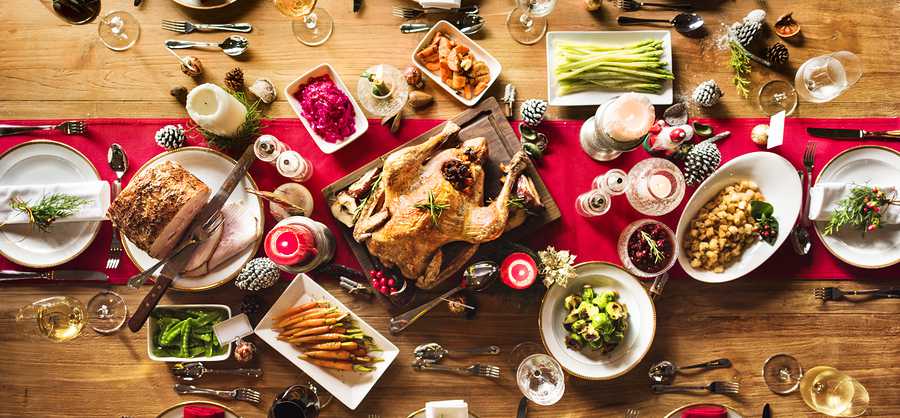The holidays are a time of family, relaxation, and love -- but they're also a time of food and indulgence. Traditional holiday meals tend to be full of sodium, saturated fat, and additives, all of which can be detrimental to heart health over time. What makes up heart-healthy meals, and how can you integrate those components into your menus this holiday season?
Understanding how to make the right choices will help you find some heart-healthy alternatives to some of your favorite holiday dishes and treats. Let's start by taking a look at what actually makes a heart-healthy diet.
Heart-Healthy Fats and Low Sodium
When giving heart-healthy diet recommendations, health care professionals have traditionally singled out saturated fat, holding it responsible for clogging arteries and raising bad cholesterol levels. Only within the past couple of years has conflicting research regarding saturated fat surfaced. A recent review looked at 72 previous studies that examined the links between fatty acid consumption and heart disease risk. The researchers found that current evidence doesn't support the advice to minimize consumption of saturated fats in cardiac patients.
This may be due to the fact that "saturated fat" is an umbrella term for the numerous saturated fatty acids that exist. Some of these will raise your bad cholesterol, while others will increase good cholesterol. Because you don't know which fatty acids are predominantly in the classic sources of saturated fats -- like butter, whole-fat dairy, cheese, and animal fats -- it's not a good idea to go crazy with them, but they can certainly fit into your holiday meal in moderation.
An even better strategy would be to swap your animal-based saturated fats with unsaturated and polyunsaturated fats primarily from plant-based sources. Unsaturated fats are great for heart health, as they lower bad cholesterol while increasing good cholesterol. Examples of these fats include:
- Olive, canola, sesame, sunflower, peanut, soybean, linseed, and flaxseed oil.
- Oily fish such as salmon, sardines, herring, and mackerel.
- Nuts, particularly walnuts, pecans, and Brazil nuts.
- Seeds particularly sunflower, flax, and chia.
- Avocados.
Also, a diet high in sodium raises blood pressure, placing an added burden on your heart. Over time, consuming high amounts of sodium can contribute to heart disease. Major sources of sodium in the diet include table salt and processed foods like broths, marinades, bread products, and dairy products like cheese and butter.
Heart-Healthy Eating
One of the most important changes you can make in an effort to eat a more heart-healthy diet is to start including more phytonutrients. These are nutrients found in plant foods, mainly fruits and veggies. Examples of phytonutrients found in these foods include:
- Antioxidants, which are important in preventing heart disease, as they fight disease-causing free radicals in the body and boost the immune system.
- Fiber, which not only lowers your bad cholesterol but can also lower blood pressure, both of which are key players in heart disease development.
- Plant sterols and stanols, which actually bind to cholesterol in the small intestine and expel it from your body through waste. These compounds can also help boost immunity.
Heart-Healthy Holidays
With some of these principles in mind, you can easily make your holiday meals more heart-healthy with some simple swaps for the traditional classics.
- Red Meat: Swap your pot roast or roast beef with cuts of meat that are lower in fat, including turkey, Cornish game hen, or pork tenderloin.
- Eggnog: Try warm apple cider in place of eggnog this year to cut down on saturated fat and calories.
- Mashed Potatoes: Instead of the traditional potatoes laden with butter and cream, try roasting potatoes with olive oil, salt, pepper, and rosemary for a flavorful dish made with heart-healthy fat.
- Green Bean Casserole: Try an assortment of roasted veggies instead to increase the variety of veggies in your holiday spread and decrease the processed, high-fat foods on your menu.
- Dinner Rolls: Offer a beautiful, rustic whole-grain loaf instead of the plain white dinner rolls to increase the nutrition of your holiday meal.
- Pies: Ditch the flaky crust full of shortening and butter, and offer warm fruit crisps for dessert.
By understanding the basics of creating heart-healthy meals, you can let your creativity run free this holiday season by swapping in healthier foods for some of your holiday favorites. With making small adjustments to your dishes, you can feel good about the holiday spread you'll be serving your family this year.




